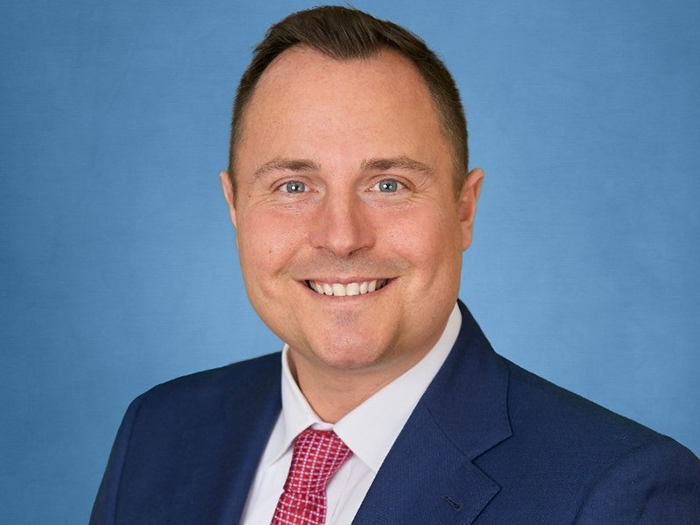Sponsored: Carisk Partners
How to Unlock the Potential of Unstructured Workers’ Comp Claim Data

Every workers’ comp claims payer has cases on the books that seem irresolvable — claims that seemed innocuous until suddenly they weren’t. The adjuster blinks and a claim that flew below the radar has somehow shot past its anticipated duration and cost.
“All carriers have hundreds if not thousands of these delayed recovery claims sitting on their books. They tend not to settle those claims; they just kind of linger, working their way through the system. They don’t raise any red flags until they’ve blown through the ODG guidelines or some dollar amount that wasn’t expected,” said Joseph Berardo, chief executive officer, Carisk Partners.
Most of these claims don’t attract attention until it’s too late because they start out seemingly straightforward — a back sprain or a twisted ankle. Given some pain medicine and physical therapy, the worker should be back to work in no time.
But the recovery journey is not always so simple.
Comorbidities and behavioral health factors unrelated to the injury itself will still impact the healing process. Conditions like obesity or heart disease, for example, may make it difficult for the worker to participate in PT. Diabetes can prolong wound healing. Poor mental or emotional health affects an injured worker’s motivation to work toward recovery.
Focusing on behavioral health first has been Carisk’s strategy for controlling workers’ comp claim costs since day one. Treating the injured worker as a whole person is at the core of the company’s mission.
“The big behavioral health factors by far are pain, major depressive disorder, PTSD and anxiety,” Berardo said. “When somebody’s injured and can’t go to work, there’s fear and stress. ‘How am I going to pay my bills? Am I going to keep my job?’ That anxiety can be debilitating and will certainly complicate physical recovery.”
Though the workers’ comp industry is by now very familiar with the interconnectedness of behavioral and physical health, capturing behavioral health risk factors and translating that data into action has remained a challenge.
“At Carisk, we are starting down the path of leveraging AI, machine learning and optical character recognition (OCR) technology to analyze clinical notes and help us identify those high-risk claims before they veer off course,” Berardo said.
The Predictive Value of Unstructured Data

Joseph Berardo, Jr., Chief Executive Officer, Carisk Partners
Workers’ comp claims are rich with both structured and unstructured data. Structured data would include medical bills and the diagnosis codes contained within. Unstructured data encompasses all the attachments that come along with a claim, including official medical reports and clinical notes written throughout the course of an injured worker’s care. It is much more difficult to capture meaningful information from these attachments, but they are critical to predicting and preventing delayed recovery.
“Those notes tell us what else is going on in this individual’s life that’s going to impact the recovery,” Berardo said.
Artificial intelligence, machine learning and OCR can now help carriers and their adjusters process those notes to look for key words that correlate with delayed recovery claims. An even newer technology called FLAN-T5-XL utilizes both AI and machine learning to pick up contextual clues and elucidate the tone of written communication, providing insight on the patient’s potential emotional state.
“What this process is doing is taking keywords, combinations of words and contextual clues and pairing it with a diagnosis or multiple diagnoses that are gleaned from the claim. So the structured data is being married with the unstructured data to provide a more complete picture of an injured worker’s likely recovery trajectory,” Berardo said.
Mentions of risk factors like substance use disorder, anxiety, depression, PTSD, fibromyalgia, arthritis and other chronic pain conditions would all raise a red flag, triggering the claims team to direct more resources to the case, such as a nurse case manager. More support for the injured worker earlier in their recovery journey can help to keep claim duration and costs in check.
Making Data Actionable
Carisk is among the first in the industry to create a product to capture unstructured claims data and make it actionable.
“Essentially, our advanced business intelligence tool is an enhancement of the work we’ve been doing in the clearinghouse — where payers can have claims submitted electronically right from the EMR systems of clinical practitioners. We have basically taken the next step of analyzing that data in a purposeful way,” Berardo said.
“Our clinical team has worked on identifying the combinations and keywords that have clinical meaning. So, what combination of diagnosis codes, when put together with other unstructured information, elevates the patient to the top of the list, informing us that that person needs a lot more attention than they have been getting? The product will also incorporate ODG guidelines, so we have benchmark claim characteristics, duration and cost to compare against.
“We are basically building an early warning system.”
Over time, this system can help workers’ comp claim payers reduce their backlog of delayed recovery claims, saving millions. More importantly, it means more injured workers will be spared the stress and negative heath consequences of a protracted recovery and be able to return to work — and normal life — more quickly.
To learn more, please visit: https://www.cariskpartners.com/intelligent-clearinghouse-provider/
This article was produced by the R&I Brand Studio, a unit of the advertising department of Risk & Insurance, in collaboration with Carisk Partners. The editorial staff of Risk & Insurance had no role in its preparation.










